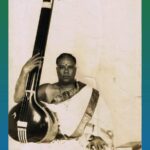In the heart of Minnesota’s social landscape, the name John Deinhardt emerges, intertwined with various facets of the state’s fabric. Through a careful examination of public records, social media, and data analysis, a captivating picture of this intriguing individual begins to surface. We’ll delve into potential ties to the music industry, examine his family and close connections, and strive to understand the threads that link Deinhardt to the North Star State. Join us on this exploration as we unravel the intricate tapestry of John Deinhardt’s life in Minnesota.
Unveiling John Deinhardt’s Minnesota Ties
Meet John Deinhardt, a man who calls Eden Prairie, Minnesota home. Born in September 1967, this 56-year-old seems to have deep roots in the Minneapolis area, suggesting a long-standing connection to the region.
The online world reveals a growing curiosity surrounding Deinhardt. Searches for “John Deinhart Minnesota” hint at a desire to learn more about this enigmatic figure. Platforms like MyLife.com offer glimpses into his past, showcasing previous addresses, phone numbers, and even listing individuals like Vaughn, Gina, and another John Deinhardt as possible relatives—all based in Eden Prairie. These digital breadcrumbs raise intriguing questions about family ties and the interconnected nature of our lives.
However, it’s crucial to remember that these online platforms are merely a starting point, offering a fragmented view rather than the complete picture. To truly grasp John Deinhardt’s story, a deeper dive is necessary. Unraveling the connections with individuals in Eden Prairie, such as Vaughn Deinhart, Gina Deinhart, and Terry Langeland, could be key. Are they family, friends, or something more? What about his neighbors like Wayne Gregoire and others? Examining these relationships often unveils the most compelling chapters of a person’s life.
While the motivation behind the online searches remains a mystery, the quest for information suggests a desire to uncover the “why” behind John Deinhardt’s story. Local newspapers, community records, and other offline sources may hold the answers, providing valuable context and insights.
Ultimately, John Deinhardt’s story, much like our own, is a complex weave of experiences, relationships, and experiences. As we strive to untangle these threads, we gain a richer understanding of the forces that shape a life.
Unveiling the First Inhabitants: Debunking the “First Person” Myth & Exploring Minnesota’s Earliest History
The question “Who was the first person on Minnesota?” is a common one, but it reflects a fundamental misunderstanding of how humans populated North America. Instead of seeking a single individual, we must delve into the rich tapestry of Indigenous cultures that have thrived in Minnesota for millennia.
Here’s what we know, based on archaeological evidence and oral histories:
- Paleo-Indians (12,000+ years ago): These nomadic hunters were likely the first humans to set foot in Minnesota, arriving after the last Ice Age. Archaeological finds, including distinctive spear points, provide clues to their existence.
- Archaic Period (8000-1000 BC): As the climate warmed, new hunting and gathering techniques emerged. The atlatl, a spear-throwing tool, became commonplace, and distinct cultural groups began to form.
- Woodland Period (1000 BC – 1000 AD): This era witnessed cultural flourishing, with the rise of pottery, burial mounds, and more complex social structures. The cultivation of crops like squash and sunflowers likely began during this time.
- Dakota (Sioux) and Ojibwe (Chippewa): By the time Europeans arrived, these two major Native American groups were prominent in Minnesota. The Dakota, with deep ancestral ties to the land, were skilled hunters and warriors. The Ojibwe, known for their birchbark canoes and mastery of trade, had migrated to the region more recently.
The Importance of Oral History:
Both the Dakota and Ojibwe possess rich oral traditions passed down through generations. These stories provide invaluable insights into their beliefs, values, and ways of life, offering a unique perspective on Minnesota’s history that written records often lack.
While we may never know the name of the very first person to walk on Minnesota soil, we can appreciate the long and fascinating history of the Indigenous peoples who have called this land home. Their stories remind us that history is a continuous journey, and that our understanding of the past is constantly evolving.
Henry Benjamin Whipple: Champion of Justice for Native Americans
Henry Benjamin Whipple, the first Episcopal Bishop of Minnesota, was more than just a religious leader. He was a passionate advocate for social justice, particularly for the rights of Native Americans, earning him the nickname “Straight Tongue” from the Dakota people for his unwavering honesty.
From New York to Minnesota:
Born in 1822, Whipple’s journey to Minnesota was anything but direct. Raised Presbyterian, he converted to Episcopalianism later in life. After serving congregations in Rome, New York, and Chicago, he was elected the first Bishop of Minnesota in 1859.
A Voice for the Voiceless:
Whipple was deeply troubled by the mistreatment of Native Americans. His commitment to justice was put to the test during the U.S.-Dakota War of 1862. Appalled by the government’s actions and the subsequent sentencing of over 300 Dakota men to death, Whipple took a courageous stand. He traveled to Washington D.C. to personally plead with President Lincoln for clemency. His impassioned arguments likely played a role in Lincoln’s historic decision to commute the sentences of 265 men, the largest mass commutation in U.S. history.
A Legacy of Education and Advocacy:
Whipple’s commitment to Native Americans extended far beyond the courtroom. He firmly believed in the power of education and worked tirelessly to establish schools specifically for Native American children, advocating for a curriculum that respected their culture and traditions.
Whipple’s legacy is multifaceted. He played a pivotal role in founding Seabury Divinity School, which later became Bexley Seabury Seminary, and helped establish Shattuck School, a prestigious prep school in Faribault, Minnesota.
Henry Benjamin Whipple’s life and work exemplify the power of faith in action. He challenged injustice, championed the marginalized, and left an indelible mark on Minnesota history. His story serves as a powerful reminder that one individual can make a profound difference in the fight for a more just and compassionate world.
Delicious Discoveries and Intriguing Destinations
Looking for the perfect Thanksgiving side dish? Our Charlie Brown Thanksgiving Cranberry Sauce is a simple yet delicious recipe that will complement any Thanksgiving feast.
If a change of scenery is on your mind, consider Anita Bryant Gillespie Place in Jackson, MS. This welcoming community offers a variety of amenities and is conveniently located.
For those captivated by history’s most daring moments, the Latunza heist will undoubtedly pique your interest. This article delves into the intricate details of this audacious robbery.
- Unlock Filipino Culture: A Deep Dive into Traditions and Practices - April 23, 2025
- Unlock Spanish Culture: Insights & Opportunities Now - April 23, 2025
- White Spirit Uses & Substitutes: A Deep Dive for Pros & DIYers - April 23, 2025
















